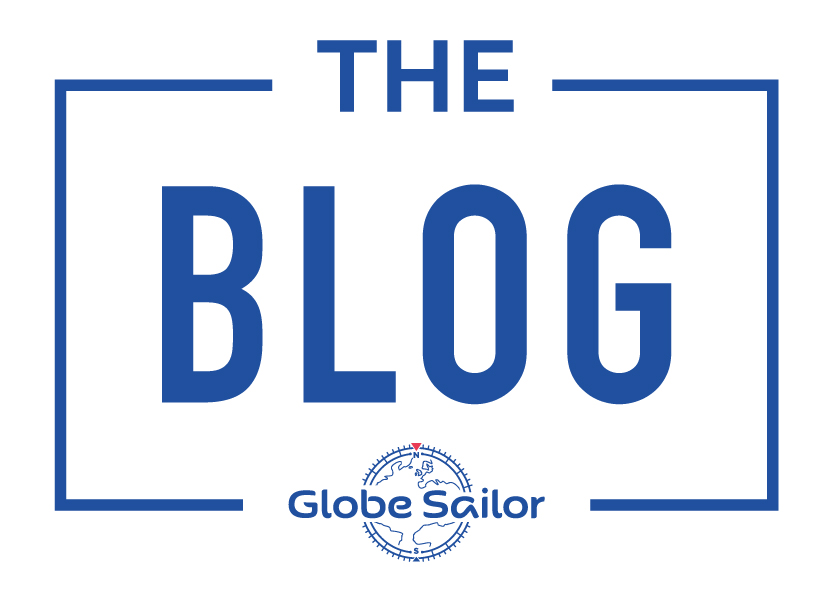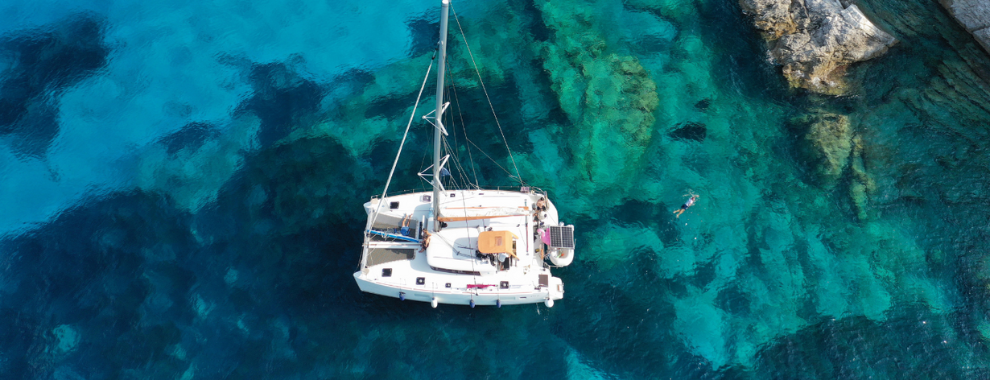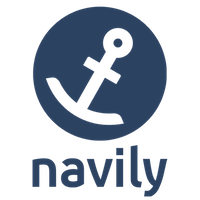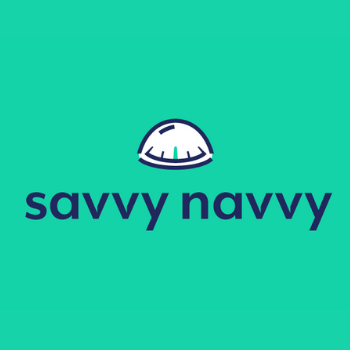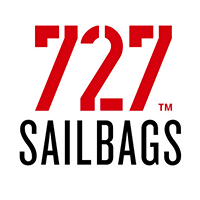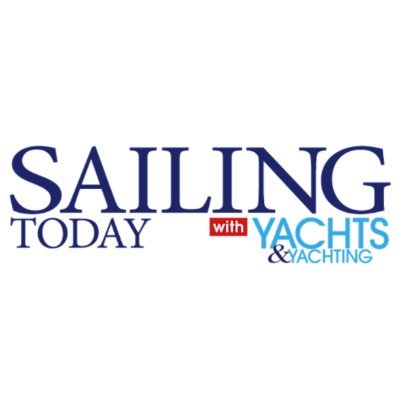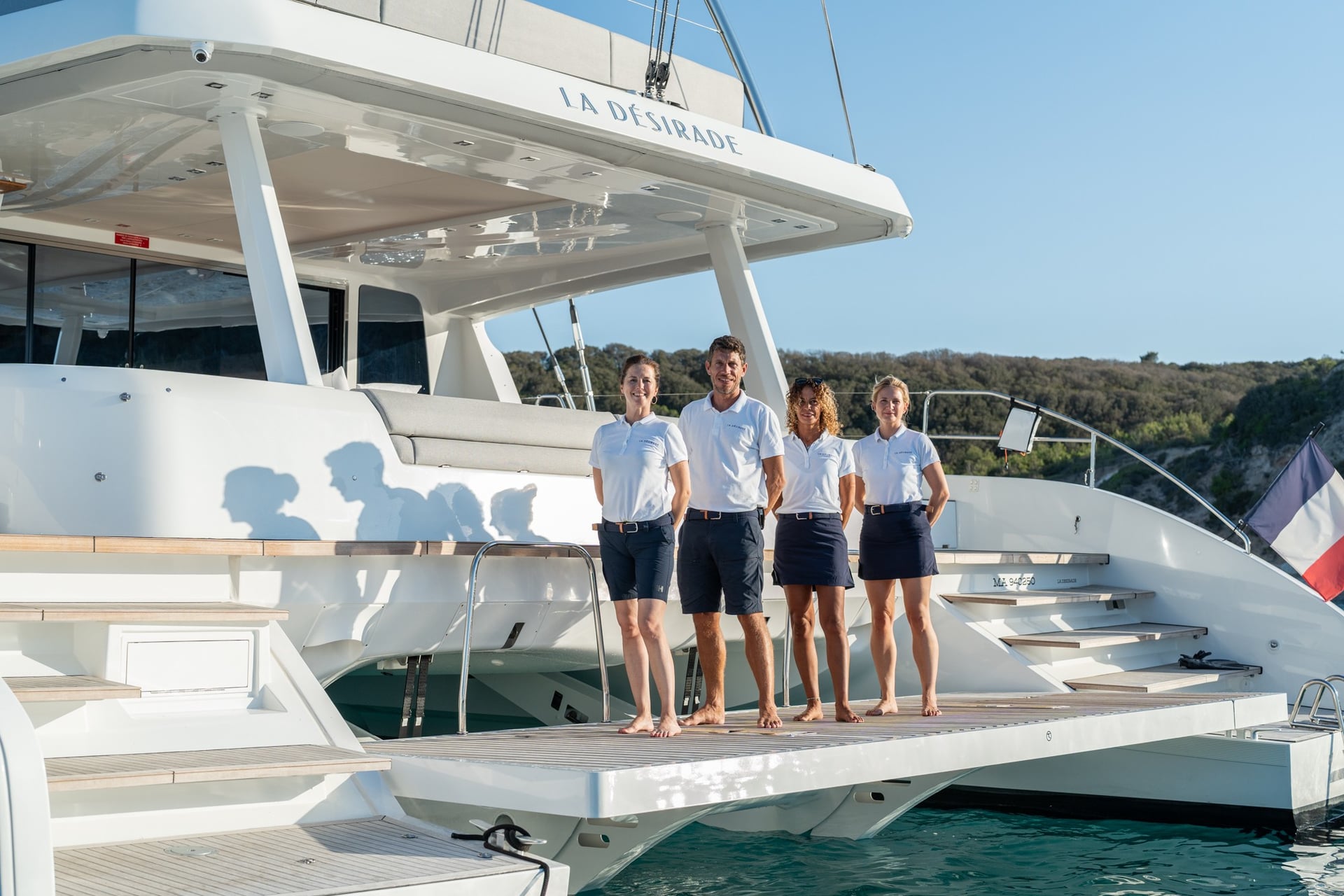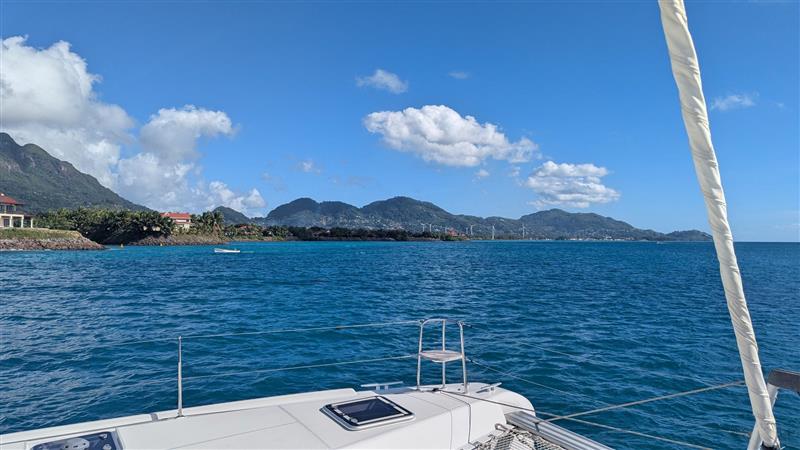How to Anchor Successfully
Globesailor, in partnership with Ardent Training, hosted an hour long webinar on How to Anchor Successfully. Many people tuned in to dedicate their Thursday evening to learn from our experts, ensuring that they can make the most out of their next yacht charter.
If you weren’t able to make it, don’t worry! In this blog, you can read about the highlights and key points of the webinar, as well as the questions and answers from our Q&A.
You can also watch a recording of the webinar on our YouTube channel here.


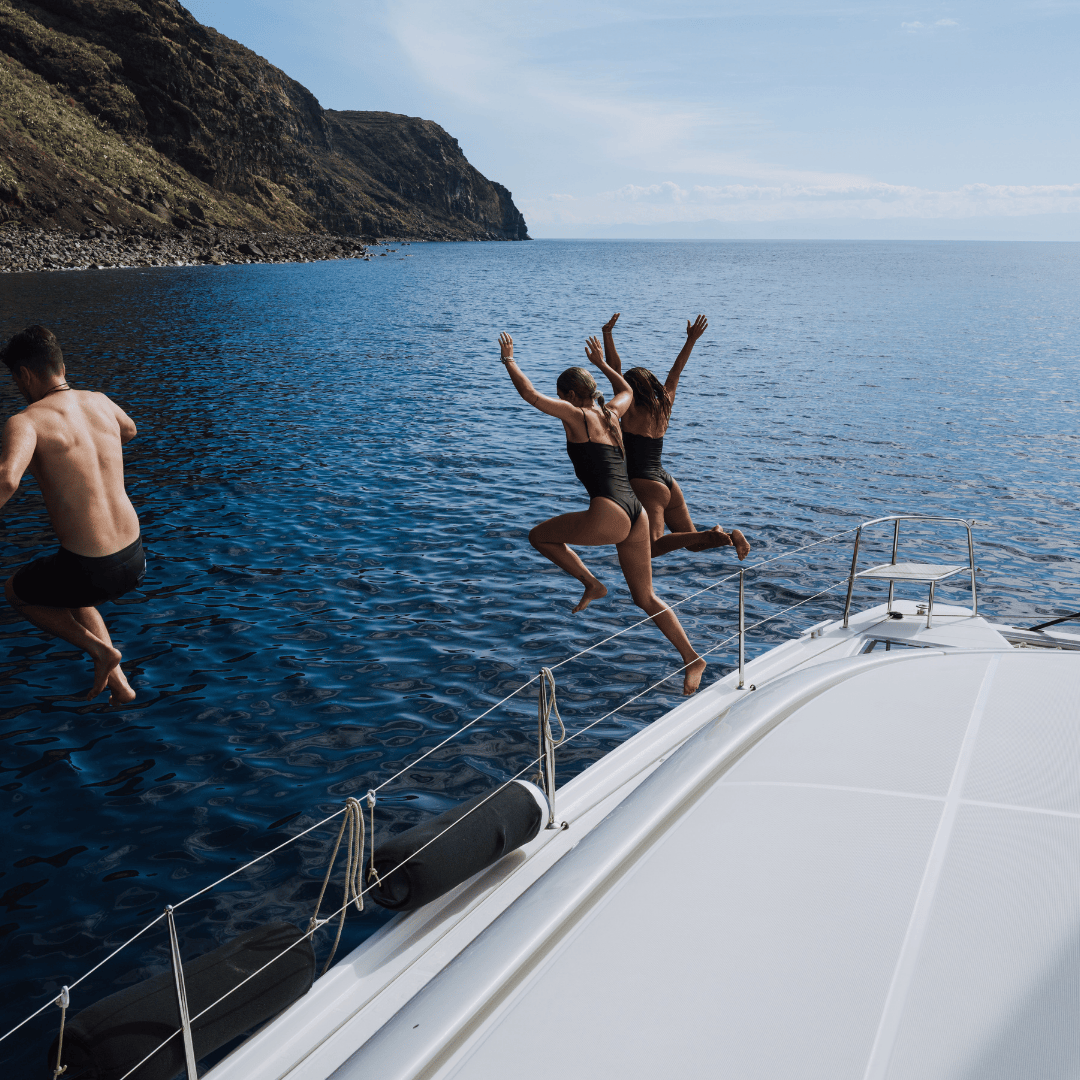
Highlights and Key points from the webinar
Choosing your anchorage wisely:
Is the anchorage suitable? Be informed, find out as much as you can about your anchorage before you arrive! This will help you anchor more smoothly, being well informed goes hand in hand with successful anchoring.
Here are some things that we should consider while choosing our anchorage:
- What shelter does that anchorage provide?: if you are anchoring along a straight coastline, even if you are protected from the wind, you may still be subject to rocky waves and swells. A wiser choice would be a deepset bay, which will offer much more protection and shelter from the elements.
- Is there anywhere that we should avoid anchoring?: Ensure that you verify whether or not you are allowed to anchor in certain areas. An anchor symbol with a cross through it means that no anchoring is allowed. Other places that you should avoid anchoring in include shipping channels and large or active ports.
- Recommended anchorages: Nautical maps and electronic aids often provide insights into recommended anchorages, this will appear as an anchor symbol in a particular area. If there are no anchor symbols in an area, don’t worry! You are still permitted to anchor there, as long as it is suitable and safe.
- Underwater cables: Although they are buried under the seabeds, these communication cables can sometimes become exposed, the presence of these are generally marked onshore with large signs showing yellow triangles or crosses. Therefore if you do see that there are underwater cables, it is wise to steer clear of these areas so as not to disrupt them!
- What is on the seabed?: On your nautical map, you may see letters dottings coastines or bays. These letters tell you the nature of the sea bed so that you can determine whether or not the anchorage is suitable.
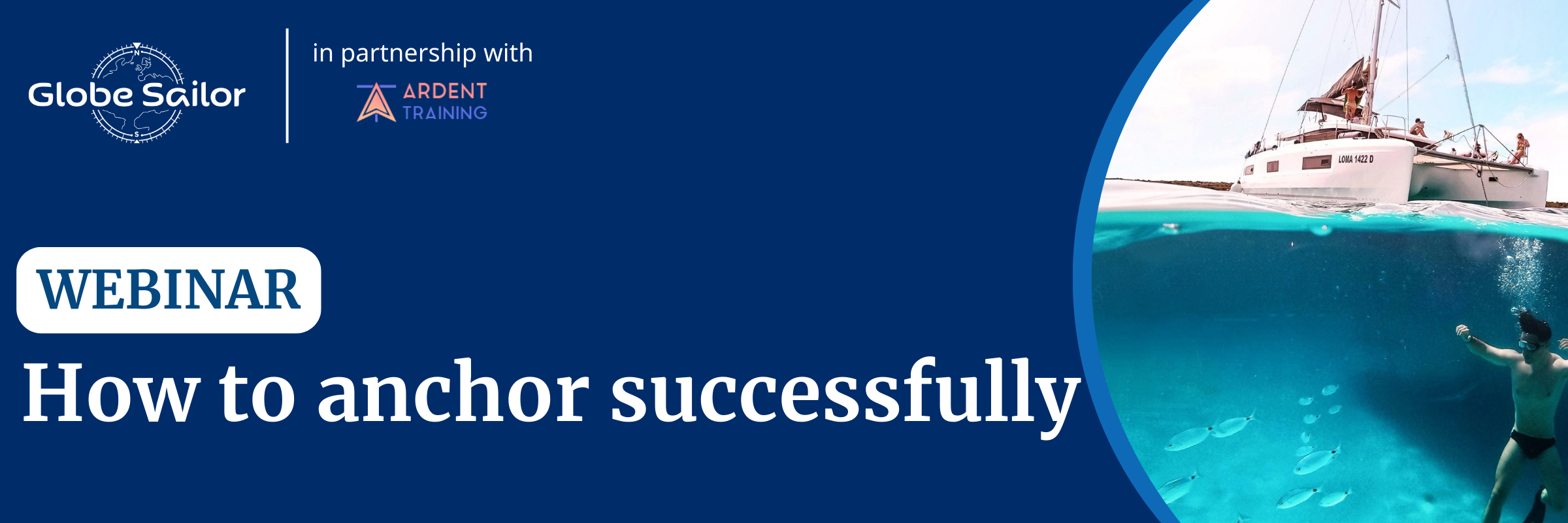
Different types of sea beds
Some seabeds are better for anchoring than others. It is important to know which types are the best for successful anchoring.
- The best type of seabed for anchoring is sand, mud and clay as the anchor works best with thicker, non slippery kinds of seabeds that it can easily dig into.
- Less favourable types of seabeds include pebbles, rocks, and stones as the anchor can easily get stuck in the rocks, or glide through lighter pebbles.
- Seaweed provides very little friction, the anchor will struggle to get a hold on the seabed, and could instead slide along the top.
- Weeds, kelp and seagrass are also less favourable choices for anchoring, as doing so can destroy the sea bed and harm the marine ecosystem.
Where can I find more information?
Electronic or online navigation guides provide efficient and easily accessible information about different types of anchorages. One of these is Navily, an online community coastal gude that provides detailed information on over 38,000 anchorages and marinas, helping you navigate your journey with ease and confidence! Using Navily you can:
- Reserve your place in over 1000 ports.
- Read reviews and see pictures posted by real sailors of over 38,000 anchorages and marinas.
- Access information about wind and swell conditions in a particular area.
- See the ‘Navily Score’ of an area – the algorithm takes into account weather forecasts, anchorage conditions and reviews of past sailors to give an area a score.
- Access information about local amenities.
BONUS: Using the Navily app you can connect and chat with sailors who are already at the locations! Using this function you can find out more about the type of anchorage in the area.
When you make a reservation with GlobeSailor, you gain access to a range of advantages, including a 12-month subscription to Navily Premium!



Monitoring
Ensure you dig your anchor in! Take a transit or use an anchor alarm, a great tool for this is the Savvy Navvy app. When you make a reservation with GlobeSailor, you gain access to the elite subscription for 2 months, allowing you to plan your itinerary and giving you access to the anchor alarm to ensure safety while anchoring!
Anchor additions
Buoy lines or trip lines are lengths of rope, the same depth as the water with a fender or small buoy attached. It allows you to see where your anchor is. If your anchor somehow gets stuck, buoy lines allow you to unlodge it more easily. It is not recommended to use these in busy areas, as they can easily get tangled with the anchors of other boats.
‘Crows feet’ stop catamarans from rocking or moving around too much while at anchor. Rather than only having one anchor line, this technique involves using two connecting lines, from each hull of your catamaran, to keep it more steady while at anchor. This can also be done with monohulls.



Common errors to avoid
- Neglecting safety, wear gloves and shoes. The proper footwear and clothing is essential for avoiding injuries.
- Not checking the tides, ensure there is enough water for you to stay at anchor during tidal drops, and that you have enough chain during tidal rises.
- Not digging the anchor in properly so that your boat can stay secure and in the same place.
- Not letting out enough chain, if you’re in a quiet and windy anchorage, let out more chain so long as your swinging circle keeps you in safe water, and away from other boats, you are good to go!


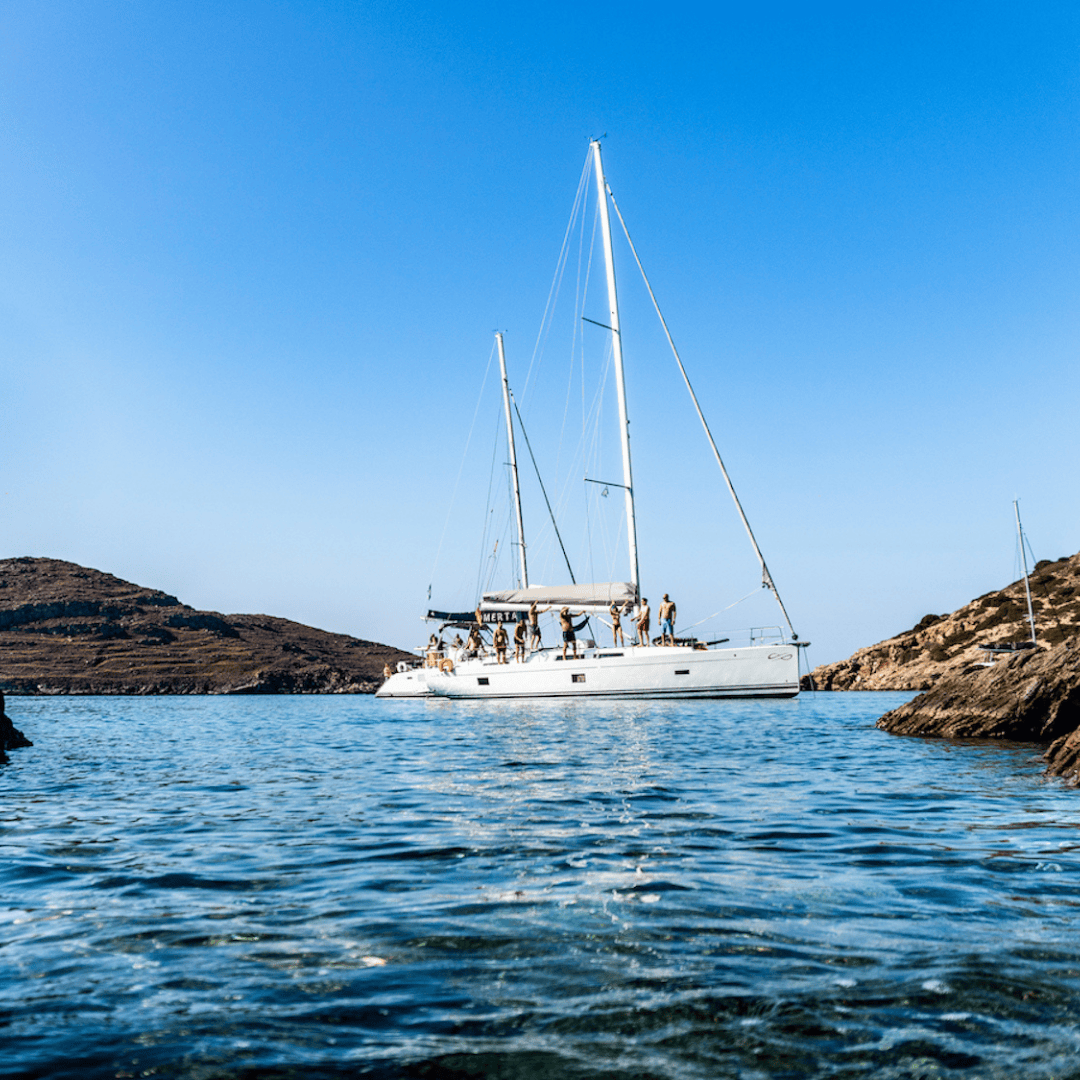
Q&A
You asked and we answered! Below you will find a list of all the questions asked during the webinar, answered by Stuart.
- How can you determine your swing based on depth and length of chain? For example, if I’m in 15 ft of water and have 75 ft of chain out can I assume I have about 60 feet of swing?
There are some mathematical formulas to work this out, but, if you are relying on it being that accurate, then you likely want to anchor somewhere with more room. I would just assume the swinging room is the size of your anchor scope. (so 75ft in your case), that way, you can’t go wrong and there is less maths involved.
- How much chain and rope rode in deep water PNM advisable?
The general rule of thumb is 4x the depth when using chain and 6x the depth when using rope or combining chain and rope.
- What do you as charter agency do to help people with proper anchor techniques?
I would suggest they ensure they have had proper training, such as the RYA Day Skipper. At GlobeSailor we support our clients by hosting information sessions, such as this webinar, and by ensuring they have the qualifications necessary to charter a yacht.
- Can you go over using two anchors in series again? Kedge first or main anchor first?
For long lining, stern to, under anchor, to the land, with a line ashore. The best way to do this is to choose your spot, have your crew in the dinghy tie a line ashore round a tree, rock or other suitable point. They can then row back out to the place where we want our stern to be. We can then reverse up to this spot, letting out as much anchor chain as possible. Here we are not concerned with 4 x the amount, just as much as possible. Keep reversing to the dinghy and then allow the anchor chain to come tight, hold the vessel in reverse, attach the shore line and we have a nice stable system. We can then add a second shore line for triangulation and more security.
- If you are tide-rode (or wind-rode and the wind changes), how can you make sure your anchor stay embedded when the tide changes … or do you have to reset?
Generally my experience is that if you have ‘dug’ your anchor in properly then it will stay safe and secure, however, if it is a large change occurring with windier overnight conditions, if you are in any doubt I would suggest just to re-lay. That way you can sleep soundly.
- In regards to Navily – where is the data sourced from? How often does it get updated? How reliable is it?
The data is sourced and predictions come from ‘meteomatics’ for a 72 hour period in increments of 3 hours. As with any forecast we should check multiple sources and different models will be updated at different times. (generally 6 or 12 hours). It is highly likely that different areas will have different levels of accuracy based on the forecast and local topography. Basically, just check the forecast and recommendation against another forecast and your own judgement.
- What do you do if you arrive at an island and you want to keep boat far offshore but the wind is blowing you on to the beach? Can you can use two anchors? What way is best to set them up?
Generally unless it is really windy, one anchor will suffice, just ensure you drop far enough out that when anchor scope is fully extended you still have enough depth. Here, you will be trying to pull the anchor up the hill, which makes dragging the anchor even harder!
- We have a 25ft boat & are thinking of getting 150 ft chain, what size would you recommend?
It is not just the length that you want to consider, but the weight of the vessel too and of course, what you windlass can take. It is likely a 10mm chain would more than suffice here but potentially 8mm would do the job.
- Can you go over using two anchors in series again? Kedge first or main anchor first?
This generally works easiest with the kedge out first, then your main anchor, but you absolutely can lower your main anchor first then attach your kedge roughly 25-50% further along the chain to act as a weight and prevent the chain lifting.
- What type of chain markers do you suggest?
I’ve never had an issue with the plastic inserts, just use plenty for each 10m mark. Some people prefer painting, but this has issues when end for ending the chain.
- Is it safe to use chain extenders if the length is short for intended use?
I’d be wary of it, the best solution I would suggest is extending your anchor scope by putting the kedge out first, connecting it to your main anchor and then lowering that. That way, you have more scope and your main anchor acts like the angel.
- I have a lofrans windlass mounted in a locker in the bow. If I want to drop my anchor in an emergency – what is best to do this?
Likely the same way as normal, untie the anchor, release the brake and lower over the bow before dropping. Just be careful on a fast drop that the anchor chain does sometimes get tangled. Ideally we would keep our kedge anchors ready to drop off the stern in order to create an emergency brake but this is generally not very practical or common.
- If you dropped the anchor, which velocity backwards?
Just enough speed to have movement backwards, we don’t want to be putting tension on the chain or anchor until we have the full scope out. Once the vessel is going backwards I generally find you can pop the throttle back in neutral.
- How does the ‘Navily Score’ work?
The Navily Score algorithm takes into account numerous factors in order to ‘rate’ the anchorage. It is very straightforward, a score of 100% means that it is essentially a perfect anchorage in regards to the current conditions. So if you have a 50% score, it is essentially 50/50. I would recommend going here, checking it out yourself and making your own decision based on the conditions, it could be a good place to stop for lunch for example, but maybe not ideal to stay there overnight. It is important to check the future forecast ourselves, as the app is giving it’s rating based on the current forecasted conditions.
Your GlobeSailor advantages
When you make a reservation with GlobeSailor, you gain access to a range of benefits to help you make the most out of your sailing holiday. Included in this is a 12 month membership with Navily Premium! Navily is a top online cruising guide designed to ensure a smoother sailing experience. With Navily premium, you gain access to 72 hour forecasts, advanced map filters and automatic itineraries, You can even take it offline!
Navily Premium is just one of the many advantages available to you when you make a booking with GlobeSailor, other advantages include:
About GlobeSailor
GlobeSailor began in 2008, and has been one of the leading European charter agencies for over 16 years. We offer yacht charters (with or without a skipper) and cabin cruises at the very best prices. Our goal is to make boat rental easier for everyone, which is exactly why we are partnered with over 1,000 professional renters around the world so you can charter a yacht in over 180 beautiful destinations. We offer our services in more than 7 languages and have offices in both Lorient and Paris, France.
This webinar was hosted by GlobeSailors very own expert charter advisor, Alec. Alec has been working for the English-speaking market here at the GlobeSailor HQ in Paris for over 2 years. Since then, he has helped countless holiday-makers plan their dream sailing holidays.
Contact us today to get a free quote for your next sailing holiday! Alec, or one of our other expert charter advisors, would be happy to help you plan your next sailing holiday!
About Ardent Training
Ardent Training is an accredited RYA training center and online sailing school, offering a wide range of theory courses, from RYA Day Skipper to RYA Yachtmaster Ocean, wherever you are in the world. All of Ardent Trainings courses are available online in video, picture or text form, so that you can choose the learning style that best suits you. Their expert instructors are on hand 7 days a week so you can easily get in touch with any questions you may have.
We had the opportunity to work with Stuart Cook, a content creator and instructor at Ardent Training. Stuart teaches RYA practical courses and examines RYA Yachtmaster candidates, so he was the perfect person to teach us all about successful anchoring!
